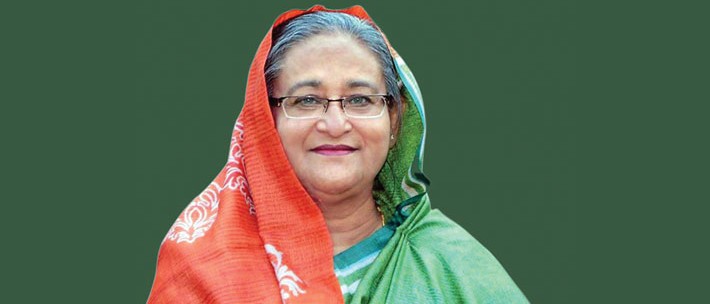BANGLADESH ECONOMY TO RECOVER FASTER THAN OTHERS
Bangladesh has recorded an impressive 5.24% GDP growth (provisional), in FY2019-20, despite the devastating impact of the Covid-19 pandemic.
The country’s inspiring performance in GDP growth and other economic indicators has led economists and global projections to forecast that the country’s economy will recover from the pandemic faster than many other economies in the region.
Many of Bangladesh’s South Asian peers and other countries around the world are in negative growth or lower growth than projections.
Bangladesh’s exports rose by 0.6% to $3.91 billion in July, after suffering an 83% decline to $520 million in April. Imports are also showing signs of improvement, with a 36% rise from May to June.
In addition, remittance hit record highs of $18.20 billion in FY20 and Foreign Exchange reserves hit an all-time high of $37.1 billion in July.
Agricultural production, a crucial engine of growth, performed better in the pandemic, even though crops suffered due to supply chain disruptions.
However, the Covid-19 pandemic continues to pose great risk as it could weaken the outlook in the US and European Union, major exports destinations for Bangladeshi goods, said the global research team of Standard Chartered Bank.
Furthermore, falling oil prices and Covid-19 in the Middle East, a major source of inbound remittances, is another concern for the Bangladesh economy.
Fiscal and monetary support is likely to be simultaneously used to cushion the growth slowdown. Bangladesh’s debt to GDP ratio is likely to increase to 40% of GDP in FY 2021, but it is still in a comfortable zone compared to peers, according to the multinational bank.
The Bangladeshi Taka is likely to remain stable on the back of Balance of Payment surpluses, it added.
The country’s external debt to GDP ratio remains low and this is a unique advantage, allowing for a V shaped economic recovery if properly utilized, the research team said.
While fiscal and monetary policy measures for stimulus packages are expected to increase local currency liquidity, there will also be opportunities to tap into the foreign currency liquidity pool for medium to long term funding for various investment and infrastructure projects, they added.
The research team also suggested looking at capital market instruments such as commercial paper, zero coupon bonds, sukuks NS green bonds for long-term financing, and moving away from traditional bank-led financing models. This will not only help to attract local investors but also bring in foreign investment to the capital market, making Bangladesh’s financial sector more vibrant.
“In the [South Asia] region, India, the largest economic power, is going through a negative trend in its economic performance indicators. However, Bangladesh is in a zone of comfort in some economic indicators such as exports, though it is yet to comment about turnarounds, agriculture,” Ahsan H Mansur, executive director of the Policy Research Institute, told Dhaka Tribune.
“Our economy will fare better than others in the region”, he hoped.
Ahsan urged the government to make the domestic market vibrant for a better recovery.
Almost all countries have experienced deceleration in economic growth performance, to varying degrees. GDP has indeed shrunk even in the UK, USA and Singapore.
According to India’s National Statistical Office (NSO), India’s economic growth slipped to 3.1% in the January-March, quarter of 2019-20.
Pakistan in FY20 (July-June), is likely to register 0.4% negative GDP growth, while the economy of Vietnam from January-June, was able to grow by only 1.81%.
“Even if the Bangladesh economy can grow by the 2.5% forecast by Centre for Policy Dialogue (CPD), in FY20, it is likely to be one of the fastest growing economies in the world,” said Towfiqul Islam Khan, senior research fellow at CPD.
(Dhaka Tribune)




